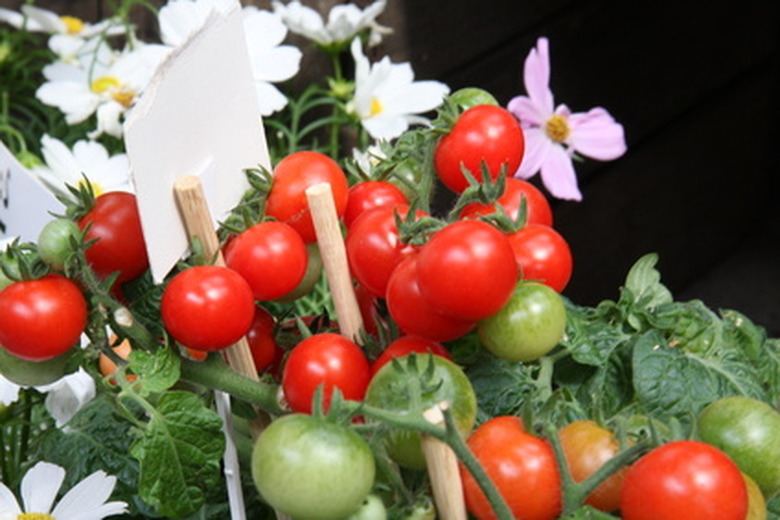How To Apply Lime To Tomato Plants
Things Needed
- Garden spade
- Compost
- Shovel
- Lime
- Granular fertilizer (8-8-8)
- Measuring cup
The best way to amend the soil successfully with lime is to have your soil tested first and then add an appropriate amount of lime based on the results. In the absence of a soil test, you can still use lime to enhance the soil around many garden vegetables. Apply lime to tomato plants at the time you plant them, for example, to improve the calcium content of the soil and reduce the incidence of blossom end rot.
Step 1
Prepare the planting area by working the soil with the garden spade down to a depth of approximately 6 inches. Add 2 inches of compost to the top of the soil, and work this in well with the spade to incorporate it completely with the soil.
Step 2
Dig holes for the tomato plants, making the holes approximately 1 foot deep and 3 feet apart.
Step 3
Mix ¾ cup lime and ½ cup fertilizer in with the soil you removed from each hole. Refill each hole approximately halfway with the amended soil.
- The best way to amend the soil successfully with lime is to have your soil tested first and then add an appropriate amount of lime based on the results.
- Add 2 inches of compost to the top of the soil, and work this in well with the spade to incorporate it completely with the soil.
Step 4
Remove each tomato plant from its temporary container, and place the tomato plants into the prepared holes. Situate the tomato plants so the lowest set of leaves is at soil level. Fill in the soil you removed from each hole around the roots of the tomato plants to finish planting. Tamp the soil down firmly with your hands.
Step 5
Water the tomato plants generously immediately after you finish planting them. Add water until the soil is evenly moist.
Tip
When you add lime to the soil, the alkaline content of the lime will serve to reduce the acidity of the soil. While a gardener adds fertilizer to the soil to nourish plants and add nutrients to the soil, lime neutralizes the soil by counteracting acids. Contact your local extension office to inquire about soil testing. Many municipalities offer soil testing free of charge.
